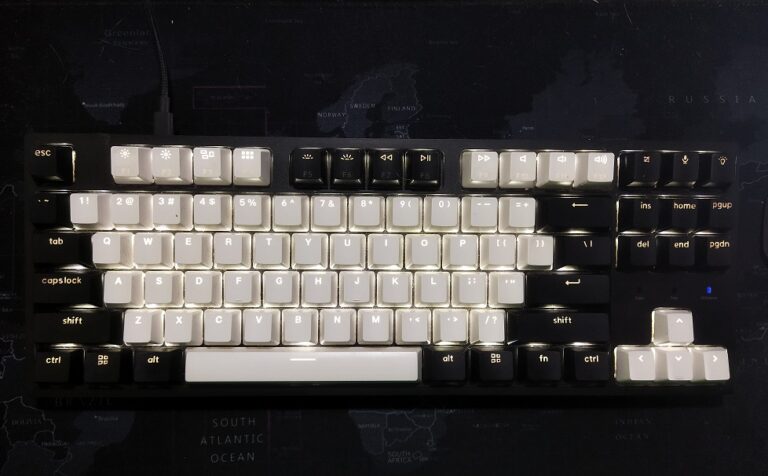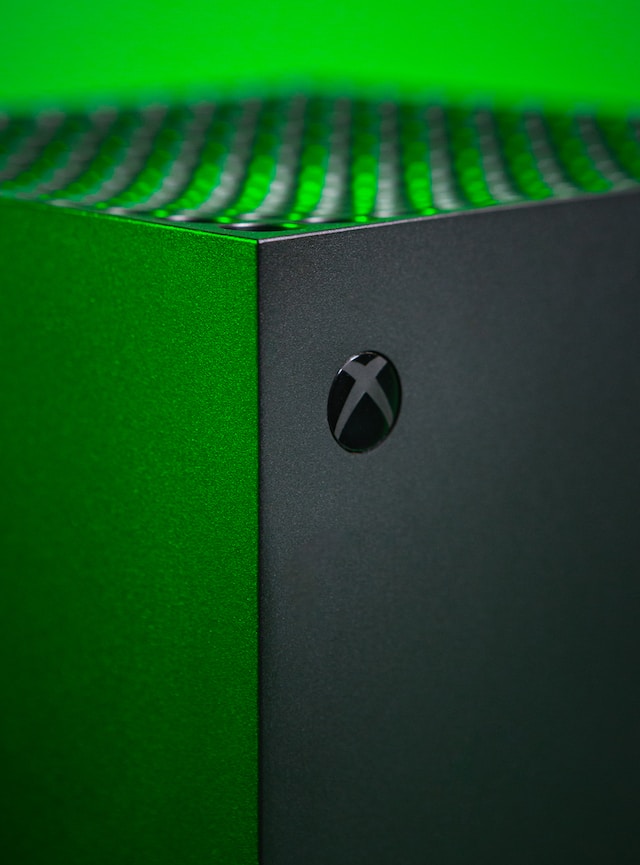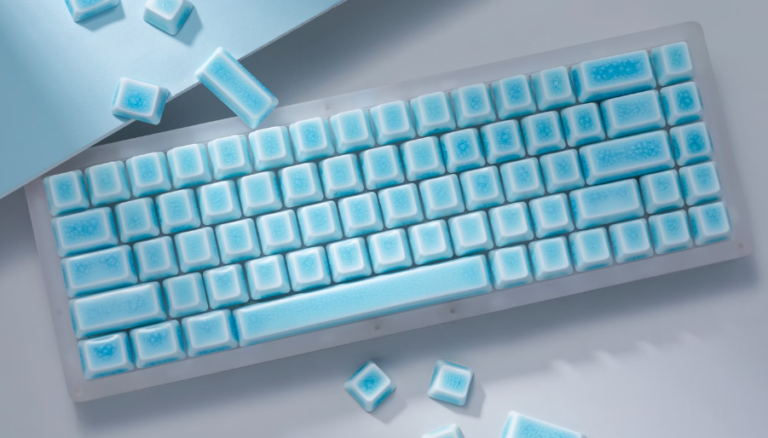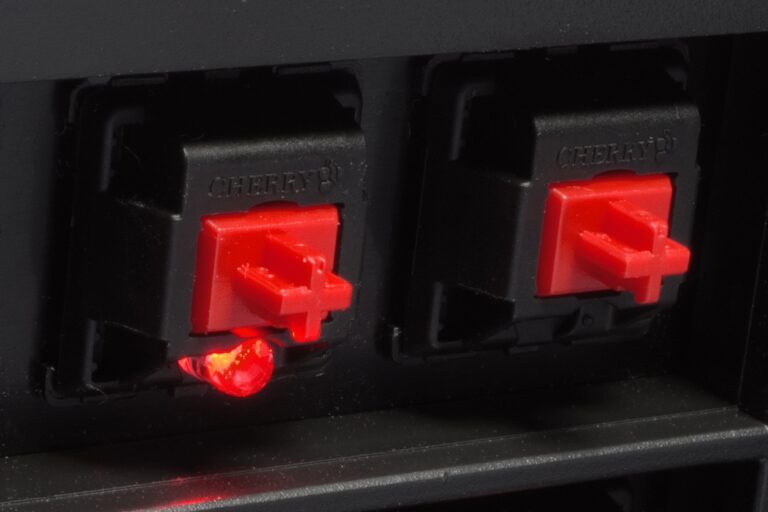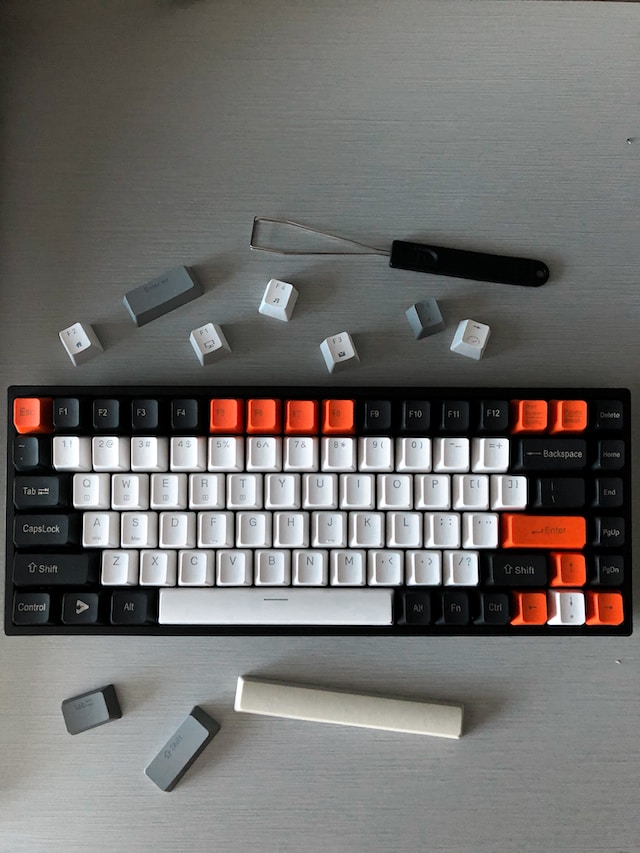Mechanical Keyboard Lifespan
Many of us might not give a second thought to the device we type on every day, but for those that do, a world of intricacies and details are met with fascination and appreciation. The realm of mechanical keyboards is one filled with elements that each play a crucial role in defining the device’s functionality and longevity. This discussion will delve into the pivotal components of mechanical keyboards such as key switches, keycaps and keyboard chassis, illuminating how they substantially influence the keyboard’s lifespan. In addition, we shall dissect the types of switches and keycaps at our disposal, the wear and tear they experience, as well as the impact of maintenance habits, all of which converge to define the lifespan of a mechanical keyboard.
Main Components of Mechanical Keyboards
The Lifesaving Factors: Main Components of Mechanical Keyboards that Impact their Lifespan
Mechanical keyboards are a go-to technology gadget for many tech enthusiasts, professionals, and hardcore gamers. But just what is it that ensures the longevity of these coveted keyboards? Here we’ll dive headfirst into the key components of mechanical keyboards that impact their lifespan.
First and foremost, switches are central to the lifespan of a mechanical keyboard. These key elements determine not only the keyboard’s response hands-on feedback but also affect its longevity. Usually, mechanical keyboards boast greater durability than their rubber dome counterparts thanks to these tactile, more durable switches. While different switch types exist, such as linear, tactile, and clicky, their lifespans generally range from 20 to 100 million keystrokes. Brands also play a key role in switch longevity, with well-established names like Cherry MX, Kailh, and Gateron making reliable, top-quality switches.
The keyboard build quality is equally influential. High-end keyboards tend to boast frame materials like aluminum or steel, offering added durability that inevitably elongates the keyboard’s lifespan. On the other hand, cheaper plastic frames entail a shorter lifespan. Moreover, some keyboards come with a protective coating or paint job that can ward off wear from prolonged usage, sustaining the overall keyboard aesthetics.
Next to consider, are the keycaps. They are the interface between the user and the switches, thus playing a vital role in the keyboard’s lifespan. Higher quality keyboards generally come with PBT (polybutylene terephthalate) or ABS (acrylonitrile butadiene styrene) keycaps. Recommendation leans to PBT for their wear-resistance, but ABS’s attractiveness cannot be dismissed. Nevertheless, keycap longevity is massively influenced by usage habits, and they are one of the simpler components to change should they begin to wear.
One cannot undervalue the importance of good maintenance to a mechanical keyboard’s lifespan. Regular cleaning to remove dust and debris, proper storage when not in use – these seemingly minor tasks work wonders in ensuring the keyboard runs efficiently for an extended period.
High-quality soldering and PCB (printed circuit board) also bear a significant responsibility. The PCB must be strong, reliable, and well-soldered. Cold or cracked solder joints can trouble the keyboard’s performance and lifespan. But, high-quality keyboards usually avert this issue by excellent soldering and using a top-grade PCB.
Conclusively, the lifespan of a mechanical keyboard is a nuanced complex driven by multiple components, ranging from the type of switches to the quality of the soldering. So, when it comes to wanting a mechanical keyboard to stand the test of time, recognizing these influencing factors could make all the difference. Here’s to a longer-lasting and fully optimized typing experience. As the great saying goes, technology is a useful servant but a dangerous master. Choose wisely, and allow these components to serve you well.
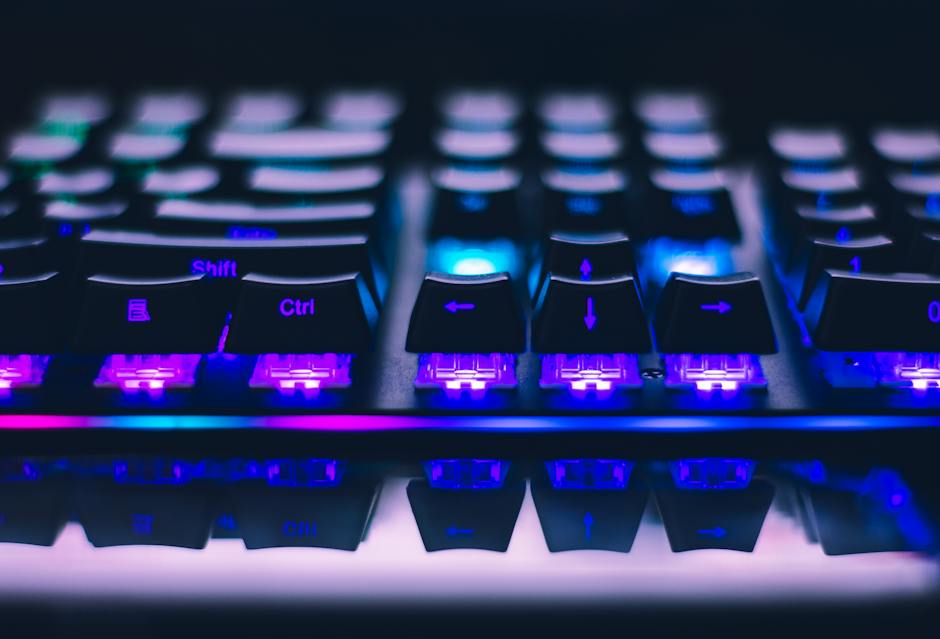
Maintenance and Cleaning for Longevity
Expanding Mechanical Keyboard Longevity: Regular Cleaning and Maintenance
Simply purchasing a top-of-the-line mechanical keyboard isn’t enough to guarantee its longevity. While it’s true that crucial elements such as switch functionality, keyboard build, and keycap quality significantly contribute towards the lifespan, regular cleaning and maintenance is often the unsung hero that substantially increases their durability and performance.
Underneath a mechanical keyboard’s artistic exterior lies a complex matrix of technology that can be significantly impacted by the minutest particles of dust or moisture. The accumulation of particulates over time can impede the performance of the switches and the contact points on the printed circuit board (PCB), hindering the keyboard’s potential.
Mechanical keyboards encounter myriad variables as they navigate through daily use. Sweat, skin oils, and even crumbs from a hurried lunch can infiltrate their way into the nooks, creating potential havoc. This diminutive debris, if not addressed promptly and adequately, can significantly reduce the lifespan of the unit.
Implementing a consistent cleaning routine is beneficial. Cleaning your mechanical keyboard should be as routine as changing your car oil or brushing your teeth. Incorporating cleaning keyboards into daily computer maintenance protocols can help prevent adverse complications.
Investing in a set of specialized cleaning tools such as a keycap puller, compressed air canisters, and keyboard cleaning gels is highly advised. The keycap puller helps in safely removing the keycaps, the compressed air displaces loosely adhered debris, and the cleaning gel tends to the hard-to-reach areas.
One common mistake users often make is ignoring the importance of cleaning underneath the keycaps. This is an area where dust and oils accumulate, potentially leading to sticky keys, unresponsive mechanisms, and general depreciation of the keyboard quality. By utilizing a puller to remove the keycaps, users can access and clean these areas efficiently and effectively.
Regular keyboard storage is also an essential aspect of the maintenance process. Ensuring your keyboard is protected from dust and moisture when not in use can significantly extend its lifespan. Dedicated keyboard covers or storing your keyboard upside down can work wonders to mitigate particulate accumulation.
On the aspect of soldering and PCB quality, while you might not be a tech wizard capable of repairing every circuit, regular cleaning and careful use can reduce the number of malfunctions. Quality soldering ensures your keyboard’s durability, while routine cleaning ensures that dust, debris, or moisture does not erode the PCB.
In conclusion, understanding and upkeeping your mechanical keyboard regularly and effectively can significantly ramp up its lifespan, equivalent to a tech-age philosopher’s stone. Diligent, targeted cleaning procedures, married with appropriate storage rituals, can help maintain premium keyboard functionality, offering an unmatched typing experience. Always remember, good mechanical keyboards aren’t merely purchased; they’re maintained.
Quality vs Quantity: A Tradeoff?
Investing in a mechanical keyboard often incites the important question – does a higher price tag equate to a longer lifespan? Interestingly, this correlation isn’t as clear cut as it initially appears. Here’s why.
Firstly, the initial manufacturing design plays a pivotal role. While there’s a general belief that expensive keyboards pack more robust, state-of-the-art designs, this isn’t necessarily true for every high-end model. Expensive, yet poorly designed keyboards can certainly fail prematurely, negating the ‘value for money’ proposition.
However, it’s important to recognize that higher priced keyboards often feature high-quality individual parts. This includes characteristics like full-metal hot-swappable mounts, thick back plates, and doubled PCB (Printed Circuit Board). These features undoubtedly enhance durability, and are rarely found in budget keyboards.
Programmability and enhanceability are other key factors contributing to a mechanical keyboard’s cost and potential longevity. Mechanical keyboards, especially the expensive ones, are known for their customizability. Such keyboards offer unique software and allow numerous keys to be reprogrammed. Thus, the keyboard remains versatile and usable even if specific keys break or fail. Some models take it a step further with hot-swappable switches, literally allowing users to ‘revive’ malfunctioning keys.
While premium we’re on the topic of modifiability, let’s also consider the durability of spare parts. High-end keyboards often support a wide range of readily available spare parts. This means, maintaining or even enhancing the lifespan of an expensive keyboard can be relatively effortless, despite the costs associated with parts replacement.
Sound dampening is another variable seldom discussed. Improved acoustics is a standard feature of expensive keyboards, primarily achieved via sound-deadening material padding. This not only enhances user-experience but potentially shields the internal components from debilitating vibrations.
Lastly, consider the brand’s reputation for honoring warranties and providing diligent customer support. Many reputed manufacturers back their high-priced models with excellent warranties and responsive support options, inevitably leading to a longer lifespan.
So, is there a direct correlation between expense and lifespan? The answer seems to be yes – mostly. Sure, there are exceptions with pricy mechanical keyboards failing ahead of time, due to poor design or manufacturing faults. But generally, higher price implies better materials, thoughtful design, excellent support, and desirable features, all contributing to a prolonged lifespan. Now, whether the price hike always justifies these improvements is a whole different debate.
Owning an expensive mechanical keyboard isn’t an assurance of longevity. How you utilize and maintain it plays a crucial role too. Taking care of your keyboard can indeed make a significant difference, overshadowing even the price element. Proven maintenance practices and consistent cleanup routine can extend the keyboard lifespan dramatically, irrespective of cost.
In the end, it’s about finding a balance between cost, features, build quality, and personal usability requirements. A decent mechanical keyboard should not just be a high-priced tech gadget but rather a well-balanced combination of performance and durability.
Replacing Parts vs New Purchase
Now that key factors impacting the lifespan of a mechanical keyboard have been highlighted, let’s delve into when and why it might be more efficient to replace a keyboard rather than swapping out some of its components. The decision process primarily depends on mechanical knowledge, the condition of the current keyboard, and the cost of replacement parts in relation to a new keyboard.
Replacing worn-out parts can be ideal if the keyboard construction is modular, allowing for easy removal and replacement of components. Spare parts, especially switches and keycaps, are easily available and often relatively inexpensive. This enables users to restore their keyboards to optimal performance without breaking the bank. Notably, switches and keycaps endure the most wear and tear because they are the hankey points of contact during use. Hence, keeping a few spares could extend the keyboard’s life span significantly.
In some cases, the fault may be with the PCB. If the user possesses good soldering skills, rectifying such issues can be straightforward and cost-effective. Nevertheless, it’s essential to remember that a poorly done soldering job can cause more harm than good, even to the point of ruining the keyboard. Therefore, attempting such should come from a place of confidence in one’s abilities.
The availability of spare parts is usually consistent for well-known brands, providing an ongoing avenue for maintenance and repair. Thus, considering the brand’s reputation for customer support should also factor into the decision. However, this strategy isn’t foolproof since even the best brands discontinue older models, making parts increasingly hard to find.
Furthermore, expensive keyboards typically come with high-quality, durable individual parts. While this translates to longer life cycles, it also implies higher costs for replacement parts. In such instances, it’s essential to evaluate whether the cost of replacement justifies the enhanced performance or if purchasing a newer model would provide better value.
Let’s not discount the importance of user preference, either. Over time, keyboard technology advances, and manufacturers release models with improved features, customization possibilities, and better ergonomics. There’s also the aesthetic factor to consider – a battle-scarred keyboard might have nostalgic value, but a sleek new model can freshen up a workstation and provide a morale boost.
In conclusion, the decision to replace parts or purchase a new mechanical keyboard ultimately revolves around the cost comparison, user competency in maintenance and repair, and personal preference for emerging technological enhancements. Balanced decisions between these factors will enable users to enjoy optimized keyboard performance over a prolonged period.
Common Messaging on Mechanical Keyboard Lifespan
Mechanical keyboards are a stalwart companion for programmers, gamers, and frequent typers, poised to deliver a satisfying tactile experience with each keystroke. While an earlier segment had provided a thorough breakdown of factors like switch types, material quality, and routine maintenance, this part of our discussion will delve into modular designs, cost considerations, and striking the perfect balance for optimal keyboard performance.
Modular construction in mechanical keyboards takes the front seat when longevity is a concern. The tech industry has increasingly been vocal about the benefits modular designs bring to the table. They offer the unique proposition of part replacements instead of complete device upgrades.
Spare parts availability extends even to springs, stabilizers, and platform mounts. Be it a popular Cherry MX switch or a lesser-known Kailh box switch, purchasing individual components efficiently lengthens the keyboard’s lifespan, a strategy that lines up perfectly with a tech enthusiast’s rational way of thinking.
The need to repair or replace a PCB (Printed Circuit Board) isn’t as unthinkable as it might seem. However, the associated hassle and costs may turn it into a daunting task to some, especially those lacking the necessary soldering skills. For mechanical keyboards, PCB prices can range all the way from affordable to pricey. Whether or not a PCB replacement is worthwhile heavily depends on not just the brand of the keyboard, but also the user’s investment into the device.
Speaking of brands, a company’s overall reputation goes hand in hand with the availability of spare parts. Well-known manufacturers like Corsair and Ducky are known for offering robust customer support and easily accessible spare parts. Brands that honor warranties and provide quality after-sales support ensure users can navigate unexpected bumps in their mechanical keyboard journey.
The cost factor isn’t confined to just the initial purchase. With mechanical keyboards, adages like ‘Buy cheap, buy twice’ could potentially ring true. Replacement parts for premium keyboards will naturally cost more, but they also make economic sense considering the overall durability they offer. Adding into the equation the higher build quality and enhanced user experience of top-tier mechanical keyboards, the long-term investment often justifies the initial cost.
Despite numerous advancements in technology, the discerning tech enthusiast still values personal preference when selecting a mechanical keyboard. The appeal of customizability, the feeling of each keystroke, and even the auditory feedback from the keyboard are factors that elicit a unique sense of satisfaction, offering an immersive experience beyond just practicality.
In conclusion, the longevity of a mechanical keyboard is a direct yield of its quality, maintainability, modular nature, and holder’s care, supplemented by the user’s ability and willingness to maintain it. So the next time you’re on the market for one, remember that striking the right balance between various factors will pave the way for a high-performing, durable mechanical keyboard.
At a glance, mechanical keyboards are remarkable devices, housing a wealth of intricacies beneath their sturdy exteriors. A deeper understanding of their constituent parts, their relative durability and the potential for maintenance or replacement, strips away the haze often surrounding their advertised lifespan. Exploring the cost-benefit quandary of high-end vs. budget-friendly options and the practicality of part replacement vs. a new purchase, we have aimed to provide a comprehensive guide to understand the real lifespan of a mechanical keyboard. Thus, we hope this discourse empowers consumers and enthusiasts alike to make informed choices achieving an optimal balance between quality, durability and cost.
Disclaimer: This page contains links that are part of different affiliate programs. If you click and purchase anything through those links, I may earn a small commission at no extra cost to you. Click here for more information.
SUBSCRIBE TO TECHNOBRAX
If you want to receive updates whenever we post new articles or emails regarding discount deals on mice and keyboards, or other electronic devices CLICK HERE to SUBSCRIBE


